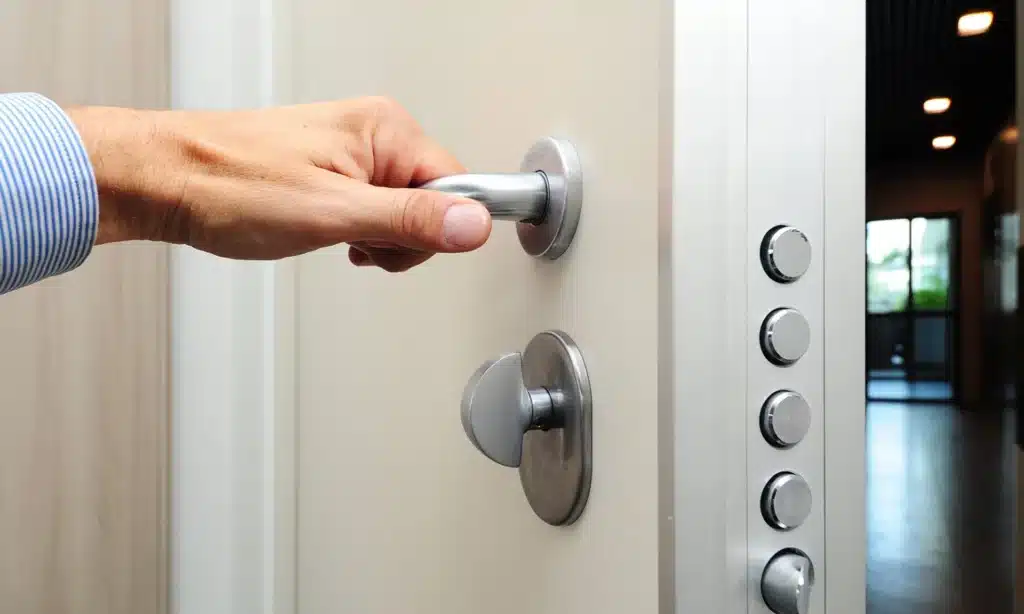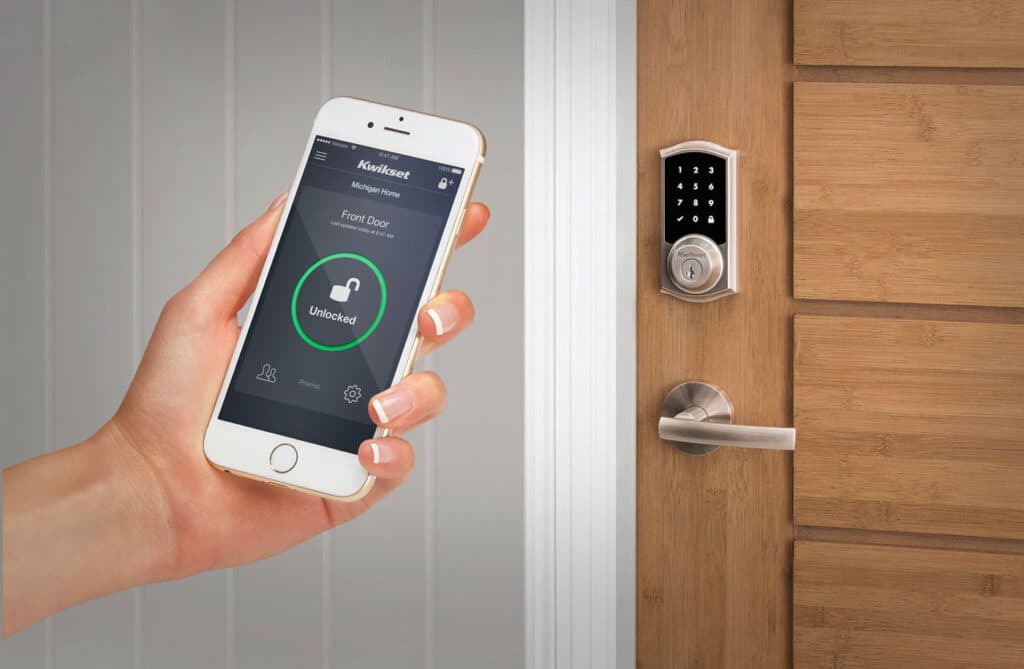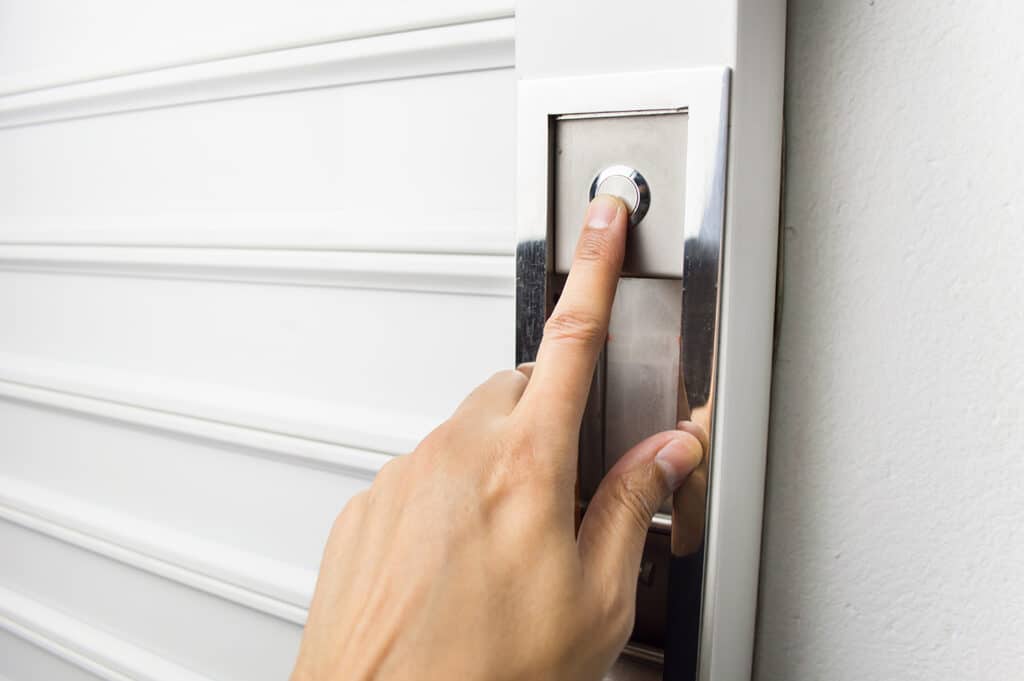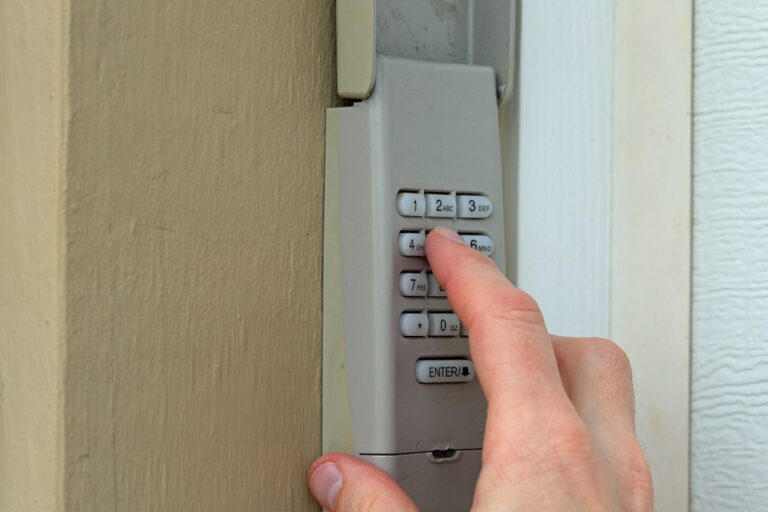Introduction
How To Secure A Garage Door From The Outside: Securing your garage door from the outside is essential to protect your valuable possessions and ensure the safety of your home. Garages often contain expensive tools, vehicles, and other belongings, making them attractive targets for thieves and intruders. By taking proactive measures to reinforce your garage door’s security, you can significantly reduce the risk of unauthorized access and enhance your overall home security.
Various methods and techniques to help you secure your garage door from the outside effectively .Practical and affordable garage and belongings protection solutions. These security methods may secure your manual or motorized garage door.
Discuss different types of garage doors and highlight the features you should look for to ensure maximum security. Additionally, we will provide insights into reinforcing the existing garage door with additional locks, deadbolts, and security bars. The role of technology in garage indoor security, such as installing a smart garage door opener or a security camera system. These advancements allow you to monitor and control access to your garage remotely, providing an extra layer of security.

How do I make my garage door secure?
Here are some tips to make sure your garage is NOT the weakest link.
- Put a deadbolt, brace, lock, or other physical safeguards on your garage door.
- Reinforce the interior door to your house.
- Install a home security system.
- Motion-activated lights.
- Upgrade your garage door opener.
- Invest in a heavy garage door.
Keeping your house and valuables secure requires garage door security. Here are some ways to safeguard your garage door.
Use solid wood, steel, or reinforced fiberglass. Avoid weak, fragile materials. Install a deadbolt lock on your garage door for added protection. This makes entry harder for intruders. Choose a rolling code garage door opener. It prevents hackers from entering your garage by generating a new code each time the door is opened.
Avoid leaving your garage door opener in your vehicle where it might be stolen. Try a keychain remote or smartphone app.
Install security cameras and lighting at your garage door to detect unusual activities. Add motion-sensor lights to prevent burglars.
Install shatter-resistant film on garage door windows and glass panels. This makes breaking in tougher.
Secure the emergency release: Garage door emergency release levers might be fragile. Prevent robbers from disengaging the door from the opener with a zip tie or specialized lock.
Can I lock a garage door?
Standard garage doors come with two locks in either corner, and you often have the option to specify additional locks. Electric doors are designed so that the locks are actuated by the door motor, and can be locked or unlocked at the press of a button.
Yes, you can lock a garage door to enhance its security. Locking your garage door is an important step in protecting your property and belongings. While garage doors typically have built-in locking mechanisms, they may not be as secure as you would like. Here are a few options for locking a garage door:
Manual locks: Many garage doors have built-in manual locks that can be engaged from the inside. These locks typically involve a handle or a sliding bar that secures the door in place. However, keep in mind that manually locking and unlocking the door can be inconvenient, especially if you frequently use your garage.
Padlocks or Hasp locks: You can install a padlock or hasp lock on the outside of your garage door for added security. This involves attaching a hasp (a metal loop) to the door and using a padlock to secure it. While this option provides extra protection, it can be time-consuming to lock and unlock the door.
Smart locks: Another option is to install a smart lock system on your garage door. Smart locks offer convenience and enhanced security features. They can be controlled remotely using a smartphone app and may include features like keyless entry, temporary access codes, and activity monitoring. Smart locks also allow you to integrate your garage door into a larger home automation system.
Can a burglar open garage door from outside?
A burglar can open a garage door from the outside in a matter of seconds with nothing more than a wire coat hanger. All they have to do is use a tool to pry open the top edge of the door, drive the hanger through the opening, grab the cord with the hook and pull.
Unsecured garage doors may be opened from the outside by a competent burglar. Intruders might utilize several methods to break into garage doors. Here are some burglary methods:
Exploiting weak or obsolete garage door openers: Burglars may intercept or copy fixed codes or radio frequencies from older devices using specialized gear. This lets them enter the garage without permission.
Forceful entry: Burglars may kick or pry open a weak garage door. This happens mainly with older or neglected garage doors.
Bypassing the emergency release: The garage door emergency release lever might be weak. Using a wire hanger or other tool, burglars may unlock the door and disconnect the opener.
Manual garage door locks may be picked by expert criminals. Some garage door types include lock weaknesses that may be exploited.
Protecting against these hazards requires proper security.Make sure your garage door opener has rolling code technology to generate a new code each time you open it. A strong garage door, reinforced windows and glass panels, and a safe emergency release mechanism may deter burglars. Security cameras, motion-sensor lights, and smart locks may improve garage door security.

Which garage doors are more secure?
Because they may be mounted frameless.
Some garage doors are more secure than others. These choices have greater security:
Solid wood or metal doors: Garage doors made of solid wood or metal, such as steel or aluminum, are typically more secure than doors made of lighter materials like vinyl or fiberglass. Solid wood doors are sturdy and difficult to break through, while metal doors offer durability and resistance against forceful entry.
Double-layered or insulated doors: Garage doors with multiple layers or insulation provide added security. The extra layers make it more challenging for intruders to penetrate the door, while insulation improves strength and durability.
High-quality rolling or sectional doors: Panels roll or slide into position. These doors are tougher to break into due to their sturdy structure and solid locks.
If you reside in a location with harsh weather or debris, consider impact-resistant garage doors. These doors improve protection by resisting severe winds, flying debris, and other external factors.
How do you secure a garage door without a lock?
You can lock your garage door from the inside by putting something on the track to keep the door from moving. You can either insert something like a padlock into the slots on the track or create a barrier by attaching a C-clamp to the track.
A garage door without a lock might be difficult to secure, but there are other ways. Consider these strategies:
Install an inside garage door security bar or brace. This mechanism prevents forcible entry, strengthening the door. Place the bar horizontally across the door to prevent lifting or pushing in.
Add layers or reinforce weak places. Attach plywood or metal panels to the door inside to make it harder to break. Install a door sensor or alarm system to notify you of garage door openings or tampering. This alerts you to illegal access attempts, adding security.
Consider a safer opener. Choose models with rolling code technology, which generates a new code each time the door is opened.. This makes code theft tougher.
Integrate smart home security gadgets with your garage door system. Install garage security cameras and motion-sensor lights to dissuade attackers. Smart door locks and keypad entry systems may regulate garage access.
Install shatter-resistant film on garage door windows and glass panels. Intruders find it harder to shatter the glass and enter the garage.
What is a garage door lock called?
T-handle locks are the most typical metal garage door lock. This locking system employs a hard-to-replicate, cylinder-shaped key to actuate the handle.
T-handle locks or garage door handle locks are the main garage door locks. Manual or non-automated garage doors use this lock.
T-handle locks put a shaft with a handle into the garage door track. Turning the handle locks the door as the shaft enters the track. Usually, garage locks engage.
T-handle locks provide basic protection by preventing outside access to garage doors. This kind has less secure locking than modern automated garage doors.
Other locks may protect a garage door besides T-handle locks, depending on its design and security demands. Padlocks, hasps, sliding bolts, deadbolts. These locks may be added to the primary lock for security.
Is it safe to leave garage door open?
The single most important takeaway here is this – never leave your garage door open longer than absolutely necessary. From thieves to pests to weather, it can wreak havoc on your life.
Leaving your garage door open for an extended period of time can pose various safety and security risks. Here are some reasons why it is generally not safe to leave your garage door open:
Theft and burglary: An open garage door is an invitation to potential thieves and burglars. It provides easy access to your belongings, including vehicles, tools, and other valuable items stored in the garage. Leaving the door open exposes your property to the risk of theft.
Unwanted entry: Open garage doors make it easy for unauthorized individuals to enter your home. Intruders can quickly access your garage and potentially gain entry to your living space, compromising the safety of you and your family.
Safety hazards: Open garage doors can create safety hazards, especially if you have young children or pets. 0They may wander into the garage and be exposed to dangerous tools, chemicals, or other hazards that are typically stored there.
Pests and animals: An open garage door can invite pests, insects, and even wild animals into your garage. They may cause damage, create unsanitary conditions, or pose a threat to your property and well-being.
Weather damage: Leaving your garage door open exposes the contents of your garage to the elements. Rain, snow, wind, and extreme temperatures can damage your belongings, including vehicles, furniture, and other stored items.
How are garage doors supported?
Two types of springs work together to make it easy to open and close your garage door. A coil-shaped torsion spring sits horizontally above the door. It counterbalances the huge weight of the door. Extension springs located above the horizontal tracks help keep the door level from side to side.
Garage doors are supported by tracks, springs, cables, and balancing. These parts work together to keep the garage door running smoothly. A breakdown of garage door support:
Tracks: Garage doors travel on vertical and horizontal tracks. Vertical tracks flank the doorway, while horizontal tracks are towards the ceiling. The rollers glide along these tracks, opening and closing the door easily.
Springs: Springs play a vital role in supporting the weight of the garage door. Garage door springs are usually torsion or extension. Torsion springs are above the door, while extension springs are on each side. These springs store and release energy to assist in lifting and lowering the door.
Cables: Garage door cables are attached to the bottom corners of the door and are connected to the springs. They work in conjunction with the springs to help distribute the weight of the door evenly and ensure balanced movement. The cables help to prevent the door from becoming crooked or misaligned during operation.
Counterbalance system: The counterbalance system is responsible for offsetting the weight of the garage door. It consists of the springs, cables, and other hardware designed to balance the door’s weight and make it easier to open and close manually or with the assistance of a garage door opener.

Conclusion
Securing your garage door from the outside is a crucial step in ensuring the safety and protection of your home and valuable belongings. By emphasizing the importance of selecting a sturdy and reliable garage door. Investing in a high-quality door with advanced security features is the first line of defense against unauthorized access. Additionally, reinforcing your existing garage door with additional locks, deadbolts, and security bars can significantly increase its resistance to forced entry.
Installing a smart garage door opener or a security camera system allows you to monitor and control access to your garage remotely, providing you with real-time alerts and peace of mind. Furthermore, the significance of practicing general security measures. Keeping your garage door closed and locked at all times, maintaining good exterior lighting, and controlling access to your garage are fundamental practices that can deter potential intruders.
Remember, securing your garage door is not a one-time task. Regular maintenance and inspections are essential to ensure that your security measures remain effective and in good working condition. By implementing the strategies and techniques outlined in this guide, you can establish a comprehensive and robust security system for your garage door. Protecting your garage and its contents not only safeguards your valuable possessions but also contributes to the overall security and peace of mind for you and your family.

